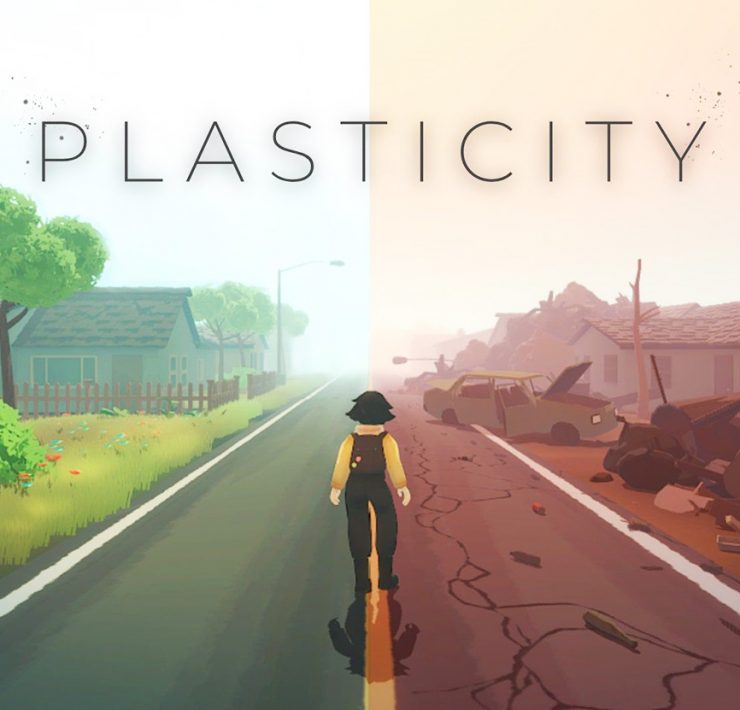Today’s readers, tomorrow’s climate leaders
- Fun and fascinating, these books about the environment are engaging and drive home a strong message.

Bhavini is trying to learn living simply. She loves cats,…
Catch ‘em young, they say. What better way to introduce your children to green living than with fascinating tales? You’d be surprised at the things you’ll learn too! Here are 4 picture books for children from ages 2 to 10 that make for great reads – for children and adults alike.

Book title: Leaves
Author and illustrator: Enrique Lara Robayo and Luis Fernando Garcia Guayara
Publisher: Katha
Suitable for: 2-10 years
Leaves looks deceptively simple – there isn’t more than a sentence on each page. But its rich imagery makes every page look like painting. It’s no suprise that it won the illustrators (also authors), Enrique Robayo and Luis Guiyara an award at the 12th Noma Concours for Picture Book Illustrations.
The story begins from the window of the narrator’s room and gently moves forward to make numerous observations over many days, ending with the narrator falling asleep. It encourages young readers to keenly observe their natural surroundings and enjoy its changes as the day passes by. It’s the kind of book that you can read with a child of any age – the pictures were attractive even to my 9 month old, who promptly discarded her toy and lunged at the book.
You can luxuriously flip through the pages while asking your child to describe what they see. It’s also a great idea to read the book in the outdoors – a park or a garden – as you see the pictures come to life in your surroundings. Leaves isn’t a page-turner; it is an experience to be savoured. It makes for a great bedtime read too.

Title: Who Ate All That Up?
Author: Sejal Mehta
Illustrator: Rohan Chakravarty
Publisher: Pratham Books
Suitable for: 3-6 years
Who Ate All That Up? is a funny picture book about an important topic: how do forests dispose their waste? What happens when predators leave meat behind or when leaves, branches and animal poop accumulate in the jungle? Well, a group of life-savers – the insects and fungi – take over the task of eating all of it up.
The book might seem short (it’s all of 12 pages) but it is an engaging Q&A format and illustrates how biodegradable waste is processed by the environment. The illustrations match the quirky writing – there are characters in the book that express annoyance at one creature who repeatedly turns up to hog on leftovers!
When I read this book to children, I ask them to compare the waste generated by animals in the forest and that by humans. It leads to the stark realisation that we’re the only species that generates waste which cannot be naturally decomposed.
A great way to begin your child’s journey towards a greener life is to help them think about waste in reverse and this book is a wonderful way to begin. It’s playful and has a repetitive storyline making it ideal for children from the ages of 3-6. You can make it even more entertaining by inventing sounds for some of its icky characters (maggots, flies and fungi).
Published by Pratham Books, it’s also available as a free download on their digital platform for picture books called StoryWeaver.

Title: I Will Save My Land
Author: Rinchin
Illustrator: Sagar Kolwankar
Publisher: Tulika Books
Suitable for: 8-10 years
I Will Save My Land, as the title suggests, sets an intense tone from the first page. The main character, a spunky little girl called Mati falls down while carrying a heavy basket of potatoes that she picked up from her Ajji’s farmland. Little Mati is fiercely attached to this land which her Ajji won back after fighting a hard legal battle against upper-caste encroachers. After a lot of badgering – the kind only determined little girls are capable of – Ajji gives her a piece of land to own.
Mati’s victory is soon threatened by a mighty coal company, making the fierce little warrior defend her land against forces far more powerful than her – a scenario that sadly plays out in the real world very often. What’s striking about this picture book is that the writing paints a picture of the inner world of children, the complexities of farming and the politics of land-grabbing without oversimplifying or preaching about it. The voice of Mati, her Ajji and friends rings clear and loud – it calls the reader not to feel pity but solidarity. There are moments in the book where it’s hard not to tear up.
It ends on an open note, leaving it to the reader to determine the takeaway. Since the premise could be a little intense for some, I prefer reading this to children who’re 8 years of age or above.
The book is pertinant because our children need to know where their food comes from, who makes it and why it is under threat. Also, that no one is too young or old or weak to be an agent of change.

Title: A Bhil Story
Author and illustrator: Sher Singh Bhil, Nina Sabnani and team
Publisher: Tulika Books
One of the best things about picture books is the seamless way in which words and art flow on the page – unlike a novel or article. Children ‘read’ pictures before words. A Bhil Story allows you to do the same. Every page is richly illustrated with beautiful Bhil art called pithora and each painting displays an outstanding attention to detail.
You could tell this story to your little one in any language regardless of which language-version you buy. (Tulika has published this book in 8 Indian languages.) The story is a delightful mix of sounds – every para is punctuated with calls, exclamations and movement. It’s not surprising given that the book actually evolved from an animation film, Ek Bhil Ni Varta produced by the same team. Each time I read this book aloud, I marvel at how musical the language is.
The story offers an allegorical response to water conservation – ‘painting’ trees – which is in tune with the Bhil philosophy of painting as a form of prayer for the well-being of nature. It’s a great book to get your child thinking about the importance of water and take lessons from the Bhil tribe about living in harmony with nature.
If you plan to buy any of the above books for your little one, consider popping into a book store before ordering it online and if you’re in one of these cities, check out these reading spaces dedicated exclusively to children’s books.
Mumbai
Kahani Tree (Prabhadevi) and Maharashtra Mitra Mandal Library (Bandra West)
Bhilar
Bhilar is an entire village dedicated exclusively to books and reading! You can visit it when you travel on the Panchgani-Mahabaleshwar road.
Bangalore
Lightroom in Cooke Town (they’ve recently opened a new space for secondhand children’s books nearby), Kutoohala in Basavangudi, Focus Bookshop in Malleswaram and Champaca near MG Road.
Chennai
Tara and Tulika, two stellar children’s publishers also sell books from their offices in Thiruvanmiyur and Alwarpet respectively. Libros is a delightful low-key library for children run from inside a home in Anna Nagar.
Trivandrum
The Reading Room is a wonderful, homely bookshop and library for children and adults that also hosts regular events for readers.
Delhi
Our capital city is the main hub of India’s publishing industry with no lack of bookshops, but the Dr B. C. Roy Memorial Children’s Library in the Children’s Book Trust building is the largest in the country and definitely worth a visit.
Bhavini is trying to learn living simply. She loves cats, grandparents and inkpens of all kinds.







